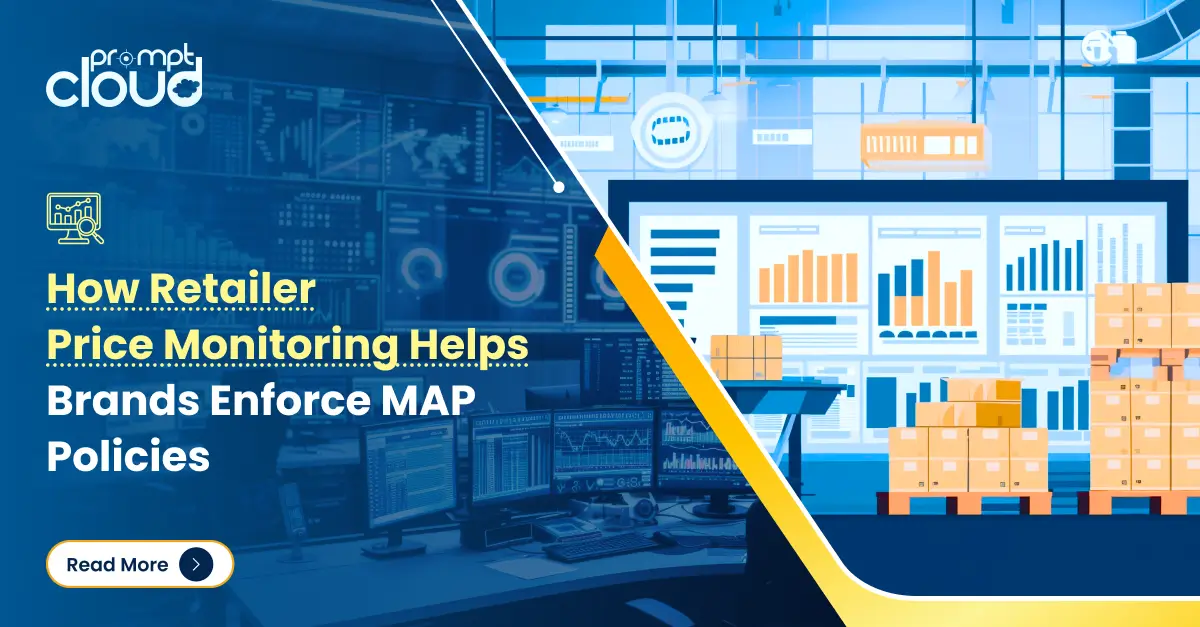
Scraping eCommerce data to devise factual and reliable strategies for eCommerce businesses is evolving the need of the hour. Data is central to your eCommerce strategy.
There is strong competition among eCommerce businesses, and you should come up with new innovative ideas to sustain. However, there is a catch: you have to come up with this idea quicker than your competitors. This appears to become a little better with the help of Ecommerce data scraping because you have access to all sorts of statistics, customer preferences, and competitor plans. Thus, making it much easier for executives to make critical decisions based on an examination of the organized data once it has been evaluated.
But the key point to consider here is the quality of data! What Ecommerce data quality is acceptable? What is bad data? What is good data? How do you differentiate between both? Let’s find out answers to all these questions and more.
What is Bad Data in Ecommerce
Nowadays, for eCommerce companies to maintain their reputation & online existence and increase leads, quality data is a necessity. However, customer demand, shipping addresses, sales history, and marketing performance depend on precise data. As a result, missing or incorrect data can be harmful to a business and result in unforeseen losses.
Poor data quality refers to any incorrect or missing data about consumers, products, or stores, which leads to poor customer experiences and decreased revenue for eCommerce businesses.
Some of these below-mentioned data are wreaking havoc on your eCommerce business:
#1: Bad Product Data quality
Suppose a top retail company has a jeans description depicted on their e-store that differs from the actual product. Now assume that a consumer decides and purchases the same jeans, only to find that the jeans they received were not exactly what they had requested. Even if the inaccuracy was unintended, the client would feel tricked here. This is a pretty standard error made by many brands and can lead to blunders on a company’s reputation. This is just one example of poor data quality in the context of Product Data. That is why product data must not only be accurate, current, complete, as well as detailed, but it must also be consistent for the client across all sales channels.
#2: Bad Customer Data
Bad customer data refers to incorrect, outdated, and otherwise incomplete information customers provide when creating an account on any eCommerce store. This could include anything from misspelt customer names to phone numbers and email addresses. eCommerce requires customer data in order to provide personalized service.
Inadequate audience data that includes incorrect or misdirected profile information such as inaccurate gender, incorrect country code, and so on can adversely affect customers’ sentiments and the urge to purchase further.
How Quality Ecommerce Data can Help your Online Business
#1: Product recommendations
If an online retailer’s data is of high quality, evaluating when users visit the website, where people visiting are located, additional details about their tastes and likes become more precise. To attain the optimum knowledge of their customers’ navigation or shopping history, retailers can use the best quality data from all across the distributed platforms and decide what exactly to offer.
#2: Improved Deliveries
The online retail industry has become hyper-competitive, necessitating supersonic delivery of commodities – and this is essential. The accuracy of the customer’s shipping address and other details ensures the timely delivery of goods purchased. Inaccurate data or a lack of data will lead to orders being delivered to the wrong address or a failed delivery. You better remember that your customers will appreciate it if their order arrives sooner. However, if you do not deliver on time, they will never buy from you again.
#3: Inventory management
Incorrectly entered historical customer data could result in inaccurate analytics and ultimately to inventory waste and money waste. Quality customer data makes sure that your online business has a sufficient supply of the desired products. Cleansed data allows your retail outlet to anticipate what your customers will buy and how their preferences will change depending on the season, adjusting your inventory accordingly.
How to Maintain Data Quality when Scraping Ecommerce Data
#1: Automated monitoring system
Websites are updated more regularly than you might think. Most of these changes may dissolve the crawler or might even lead to scraping inadequate and inaccurate data. Thus, you need a fully automated monitoring system to keep track of all crawling jobs taking place on your servers. This monitoring system tracks the scraped data for inconsistencies and errors continuously.
#2: High-end servers
The reliability of the servers determines how smoothly the crawling occurs and, as a result, impacts the eCommerce data quality. As a result, we must use high-end servers to run the crawlers. This will prevent crawlers from failing due to a sudden high load on servers.
#3: Data cleansing
The crawled data may contain unnecessary extra elements such as HTML tags. In that sense, this information can be described as crude. The cleansing system does an excellent job of removing these elements and thoroughly cleaning up the data.
#4: Structuring
Structuring gives the data an appropriate, machine-readable syntax, which makes it suitable for databases and analytics systems. When the data has been structured, it is ready for consumption, either by uploading it into a database or just by plugging it into an analytics system.
Given the importance of eCommerce data scraping, a customized web scraping service is the one that can provide you with a competitive advantage. PromptCloud, a web scraping service provider, handles the difficult work while you focus on becoming your organization’s superhero.





















































